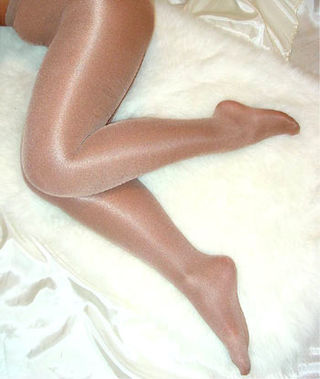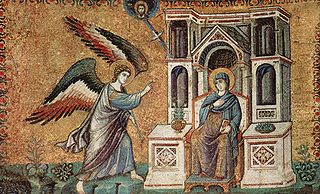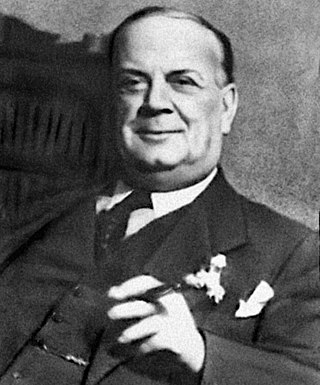Emilio Cavallini | |
|---|---|
 | |
| Born | 1945 San Miniato, Tuscany, Italy |
| Nationality | Italian |
| Label | Emilio Cavallini |
Emilio Cavallini (born 1945 in San Miniato, Province of Pisa) is an Italian fashion designer, particularly noted for his hosiery collections.
Emilio Cavallini | |
|---|---|
 | |
| Born | 1945 San Miniato, Tuscany, Italy |
| Nationality | Italian |
| Label | Emilio Cavallini |
Emilio Cavallini (born 1945 in San Miniato, Province of Pisa) is an Italian fashion designer, particularly noted for his hosiery collections.
From 1964 to 1966 he attended College in Florence “Universita’ di Firenze, Economia e Commercio”. He quit college because of this fascination with the world of fashion and went to the "Swinging London". He met Mary Quant, his passion for hosiery started and started to dress women’s legs with patterned hosiery. He developed pantyhoses with black/white patterns, dots, starts and skulls, stripes, animal and different kids of fishnets. He loved the fluorescent colors.
In 1970, he opened in San Miniato his own company, Stilnovo Spa. Besides Mary Quant he started producing for the most important brands such as Dior, Celine, Roberta di Camerino, Balenciaga, Gucci, Alexander McQueen and more..
In 1980, he launched his own brand of Emilio Cavallini hosiery. It was an immediate success, he started designing shoes, leather accessories, bathing suits and a full avant-garde clothing line for young men and women. Licensees' retail stores started to open in Florence, Milan, Rome, Paris, Düsseldorf, London, Hong Kong and Tokyo. He had a runway show in Paris with his line for men and in Milan for women. He became member for Milan Chamber of Fashion. In the 1980s he believed that the time to look for new clothing forms is over and he started to develop clothing without seams on special seamless machines with large cylinders that were intended for hosiery. He launches the collection in New York and continues developing a large tight that covers the whole body.
In 2009, Stilnovo S.p.A. produces 4 million fashion tights per year and sells worldwide. Currently he is working on a building and archive with the patterns and techniques he developed in 40 years of design. He also nourishes his passion for current and ancient art. This passion leads him to build art pieces of various forms and dimensions using tights as if they were strings, he uses his mathematical knowledge to figure out the tensions of yarns.

Francesco I Sforza was an Italian condottiero who founded the Sforza dynasty in the duchy of Milan, ruling as its (fourth) duke from 1450 until his death.

Francesco Maurizio Cossiga was an Italian politician. A member of Christian Democracy, he was prime minister of Italy from 1979 to 1980 and the president of Italy from 1985 to 1992. Cossiga is widely considered one of the most prominent and influential politicians of the First Italian Republic.

Tights are a kind of cloth garment, most often sheathing the body from the waist to the toe tips with a tight fit, hence the name. They come in absolute opaque, opaque, sheer and fishnet styles — or a combination, such as the original concept of the American term pantyhose with sheer legs and opaque panty.

Pantyhose, sometimes also called sheer tights, are close-fitting legwear covering the wearer's body from the waist to the toes. Pantyhose first appeared on store shelves in 1959 for the advertisement of new design panties as a convenient alternative to stockings and/or control panties which, in turn, replaced girdles.

Dame Barbara Mary Quant was a British fashion designer and icon. She became an instrumental figure in the 1960s London-based Mod and youth fashion movements, and played a prominent role in London's Swinging Sixties culture. She was one of the designers who took credit for the miniskirt and hotpants. Ernestine Carter wrote: "It is given to a fortunate few to be born at the right time, in the right place, with the right talents. In recent fashion there are three: Chanel, Dior, and Mary Quant."

Pietro Cavallini was an Italian painter and mosaic designer working during the late Middle Ages.

Guccio Giovanbattista Giacinto Dario Maria Gucci was an Italian businessman and fashion designer and founder of the fashion house Gucci.

Guccio Gucci S.p.A., doing business as Gucci, is an Italian luxury fashion house based in Florence, Italy. Its product lines include handbags, ready-to-wear, footwear, accessories, and home decoration; and it licenses its name and branding to Coty for fragrance and cosmetics under the name Gucci Beauty.

Roberto Cavalli was an Italian fashion designer and inventor. He was known for exotic prints and for creating the sand-blasted look for jeans. The Roberto Cavalli fashion house sells luxury clothing, perfume and leather accessories.

San Miniato is a town and comune in the province of Pisa, in the region of Tuscany, Italy.

Fashion of the 1960s featured a number of diverse trends, as part of a decade that broke many fashion traditions, adopted new cultures, and launched a new age of social movements. Around the middle of the decade, fashions arising from small pockets of young people in a few urban centers received large amounts of media publicity, and began to heavily influence both the haute couture of elite designers and the mass-market manufacturers. Examples include the mini skirt, culottes, go-go boots, and more experimental fashions, less often seen on the street, such as curved PVC dresses and other PVC clothes.
Costume National is an Italian fashion house, founded in 1986 by Ennio Capasa, creative director, and his brother Carlo Capasa, CEO. Costume National's head office is located in Milan, Italy. The company produces clothing under the brands Costume National, Costume National Homme and C’N’C as well as scents including The Trilogy, Scent Gloss, Scent Cool Gloss, Intense, 21, and Homme.

Milan Fashion Week is a clothing trade show held semi-annually in Milan, Italy. Upcoming autumn/winter fashions are showcased in February/March of each year, and upcoming spring/summer fashions are showcased in September/October of each year. Many designers showcase new designs and upcoming collections. Milan Fashion Week is one of the "Big Five" global fashion weeks alongside New York, Paris, London, and Tokyo.
E. Marinella is an Italian necktie company founded by Eugenio Marinella in 1914 in Naples and is famous of having one of the best ties in the world. It's a small shop of just 20 square metres, a charming lounge offering real treasures of refinement and taste, opened in Naples in 1914 on one of the most beautiful seafronts in Italy, a promenade for Neapolitan high society.
Italy is one of the leading countries in fashion design, alongside France and the United Kingdom. Fashion has always been an important part of the country's cultural life and society, and Italians are well known for their attention to dress; la bella figura, or good appearance, retains its traditional importance.

Giorgio di Sant' Angelo (Jorge Alberto Imperatrice), commonly known as Giorgio Sant'Angelo, (1933–1989) was an Italian/Argentinian fashion designer based in the United States. He was known for creating ethnic-inspired looks early in his career, for which he won the prestigious American Coty Fashion Critic's award in 1968 and in 1970. Using fabrics like tie-dyed chiffon, leather and cotton, he created romantic clothing that reflected the hippie culture of the era. But his innovative use of knitwear, which he continuously developed throughout his career, was often his signature and was an influence on other designers.

The history of Italian fashion is a chronological record of the events and people that impacted and evolved Italian fashion into what it is today. From the Middle Ages, Italian fashion has been popular internationally, with cities in Italy producing textiles like velvet, silk, and wool. During the Middle Ages and Renaissance, Italian fashion for both men and women was extravagant and expensive, but the fashion industry declined during the industrialization of Italy. Many modern Italian fashion brands were founded in the late 19th and early 20th centuries, and in the 1950s and 1960s, Italian fashion regained popularity worldwide. While many clients of Italian fashion designers are celebrities, Italian fashion brands also focus on ready-to-wear clothes.
Ermanno Scervino is an Italian fashion house headquartered in Florence, Italy. Entrepreneur Toni Scervino and designer Ermanno Daelli founded the fashion label in 2000.
Roberto Cavalli S.p.A. is an Italian luxury fashion company founded by the designer Roberto Cavalli in Osmannoro, Florence, during the 1970s. Known for animal prints on leather and textiles, the label manufactures and markets haute couture, ready-to-wear, and accessories, including handbags, eye wear, watches, shoes, perfumes and jewelry. The company is also involved in interior design projects for high-end buildings and hotels.

Siro Lombardini (1924—2013) was an Italian economist and politician. He served as the minister of state holdings between 5 August 1979 and 4 April 1980 in the first cabinet of Francesco Cossiga. He was also the president of the Italian banking institute Banca Popolare di Novara. In addition, he was among the significant economists being a specialist on monopoly theory. One of his well-known students is Romano Prodi.